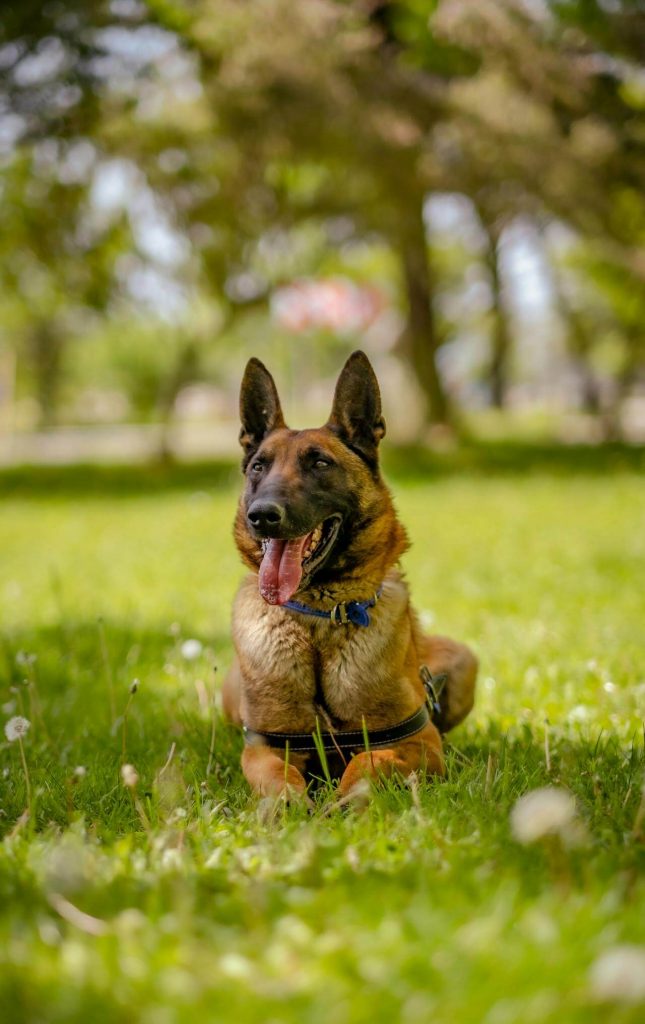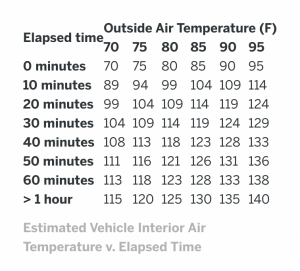For dog parents, summertime means long walks and afternoons at the park. It also means high temperatures, hot sidewalks, and a unique set of safety considerations.
When the weather is hot, dogs’ internal temperature can rise faster than their bodies can dissipate heat. This condition, called heat stroke or hyperthermia, is a medical emergency.
Sadly, heat stroke is more common than many pet parents realize, and it’s not limited to pets left in hot cars — when temperatures climb, your dog can overheat just by being outdoors. The prognosis for heat stroke is poor, and dogs who survive can experience long-term health issues.
Learn the warning signs of heat stroke and get prevention tips so you and your canine companion can enjoy sunny days safely.
Essentially, heat stroke is a high fever that occurs when the outside temperature causes your dog’s body temperature to rise.

Unlike us, dogs aren’t able to dissipate body heat by sweating. Their primary mechanisms for regulating internal temperature are panting and vasodilation.
Panting works by passing air over the moist surfaces of their nose and tongue so that it cools as they inhale.
Vasodilation causes blood vessels in the ears and face to expand so that warmer blood can cycle closer to the skin’s surface to cool down.
When a dog’s body temperature exceeds their normal 101.5℉, these regulatory functions kick in to return it to a safe baseline. On very hot days, however, dogs who don’t have sufficient access to water and shade may be unable to keep their temperature down.
Three and a half degrees Fahrenheit may sound negligible, but for dogs, it’s the danger zone. Body temps of 105℉ can damage organ systems and cause serious neurological complications.
The early warning signs of heat stroke tend to look a lot like general distress. Overheated dogs will pant and drool excessively and may seem hyperactive or unusually clumsy.
As heat rises and dehydration worsens, dogs can experience:
Dogs who don’t get a fast, thorough medical intervention can experience serious long-term complications from a heat stroke episode, including brain damage, arrhythmia, and kidney and liver failure.
Though heat stroke can affect any dog who doesn’t have sufficient relief from hot weather, some are particularly at risk. Exercise extra caution with:
Sadly, one of the biggest contributors to summertime heat stroke is entirely preventable. Many people leave their pets in the car to run errands assuming that the internal temperature of the car will stay similar to the outside temperature. Nothing could be further from the truth.
 With no air circulating, a locked car heats up rapidly. Within 10 minutes, the air inside the cab is nearly 20℉ hotter than the ambient temperature. Check out the American Veterinary Medical Association’s Vehicle Interior Air Temperature Estimator, and always bring pets inside with you or leave them at home on warm days.
With no air circulating, a locked car heats up rapidly. Within 10 minutes, the air inside the cab is nearly 20℉ hotter than the ambient temperature. Check out the American Veterinary Medical Association’s Vehicle Interior Air Temperature Estimator, and always bring pets inside with you or leave them at home on warm days.
If you suspect that hyperthermia is setting in, move your dog to a cool area immediately and offer room temperature water. Never spray or splash your dog with cold water, as lowering their temperature too quickly can cause shock.
Get your pet to the vet as quickly as possible, even if they seem to normalize once they cool down. Follow-up treatment may be necessary to prevent any long-term health problems resulting from the episode.
When it comes to heat stroke, prevention is the best policy. Avoid long walks and play sessions during the hottest part of the day, and limit exposure, particularly for at-risk dogs.
Help keep your pet’s natural mechanisms for temperature regulation working by ensuring they’re properly hydrated. Unlike cats, dogs don’t usually have to be coaxed into drinking, but be certain that they have good access to plenty of clean water throughout the day so their bodies are prepared to deal with the heat.
Although dogs’ normal body temperature is a few degrees hotter than ours, remember that they aren’t as well-equipped to dissipate heat. If you’re feeling hot, your dog is even hotter — give them a cool place to lounge when temps are high.